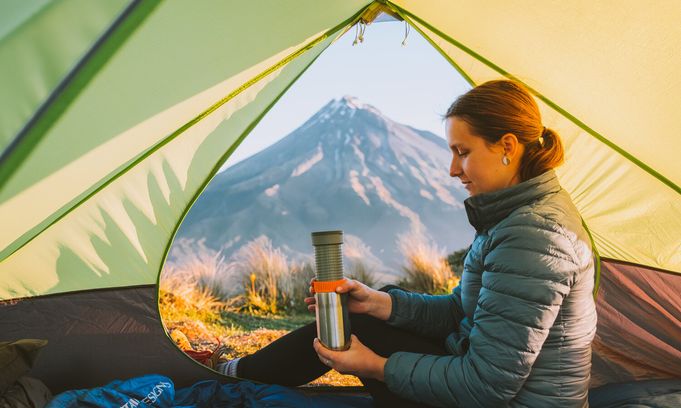The huge popularity of coffee is a great incentive for companies. As a result, the amount of innovation in these relatively uncomplicated devices is quite commensurate with high-tech TVs or smartphones. In expensive fully automatic espresso coffee machines, companies mainly improve the automation level and customization. For example, many modern models support more than 10 automatic modes for making coffee and milk drinks and several user profiles. In addition, manufacturers are actively experimenting with extraction technologies. The PEP technology in the Jura models and the Doppio+ mode in the Delonghi with intermittent pump operation illustrates this trend.
Portable espresso coffee machine is also the result of creative companies search. The AeroPress was the first of this type. As known, it was designed by the American inventor Alan Adler in 2005 and today is produced by AeroPress Inc.
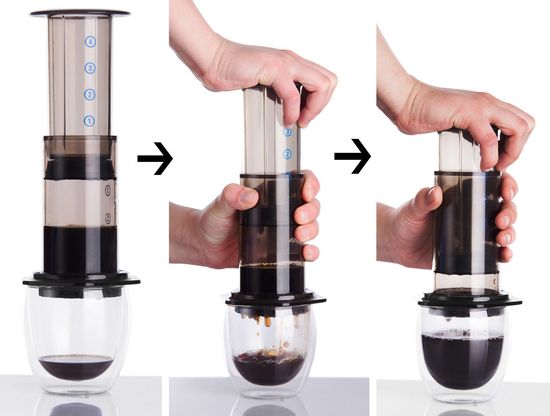
Making coffee with AeroPress is carried out in two stages. First, ground coffee is poured with hot water, then this mixture is forced through a paper filter using the built-in hand pump. These models quickly became popular with many coffee lovers. Their pros list includes:
– a very simple design practically excludes breakages;
– low price of about $ 30;
– full control of the brewing process by adjusting the force on the piston (extraction time), water temperature, amount of ground coffee, etc;
– compactness and mobility.
The cons list includes:
– with this brewing method, the coffee taste and strength depends significantly on the variety of coffee beans;
– disposable filters.
7 years later, Wacaco introduced the Minipresso, which can be classified as the next generation of portable espresso machines.
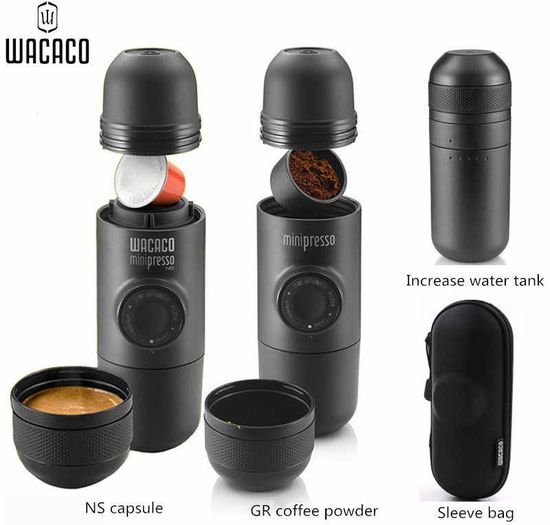
Minipresso, Nanopresso and Pipamoka
Unlike the AeroPress, Minipresso uses a traditional espresso recipe by forcing hot water under pressure through ground coffee or a capsule. The hand pump provides 8-9 bar due to the reciprocating movement of the spring-loaded piston (plunger), which is quite enough for a classic recipe. For $ 50 today, the company offers GR, NS, and SA models, which can use ground coffee, NS capsules, Caffitaly System capsules, and Tchibo Cafissimo capsules, respectively.
A few years later, the company introduced the Nanopresso series with a more powerful pump that delivers pressures from 15 to 18 bar.
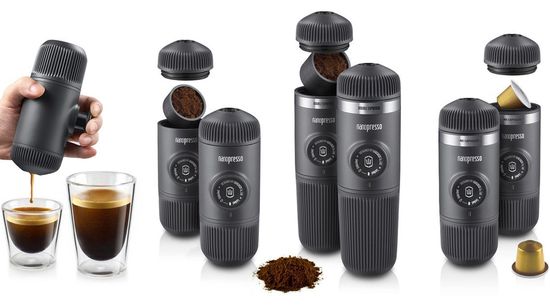
Of course, it’s overkill for the preparation of a classic espresso. But the new design has significantly reduced the required force when pressing the piston, which is convenient for people without well-developed muscles. From this point of view, Minipresso is not very convenient, for example, for teenagers or seniors. In addition, Nanopresso uses a spring-loaded valve, which significantly improves the brewing quality by distributing the ground coffee more evenly. Today it costs $ 65 without additional accessories.
The $ 47 Pipamoka is the latest generation of portable Wacaco espresso coffee makers.
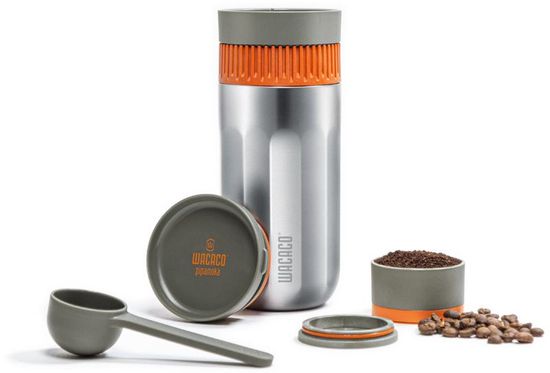
Of course, innovative construction and a patented twisting mechanism has become the main key feature of the new series. It reduces to a minimum the required physical effort, since the translational piston movement is achieved by moving the inner chamber when it rotates along the thread with a large pitch. In terms of brewing technology, it’s analog to the French press.
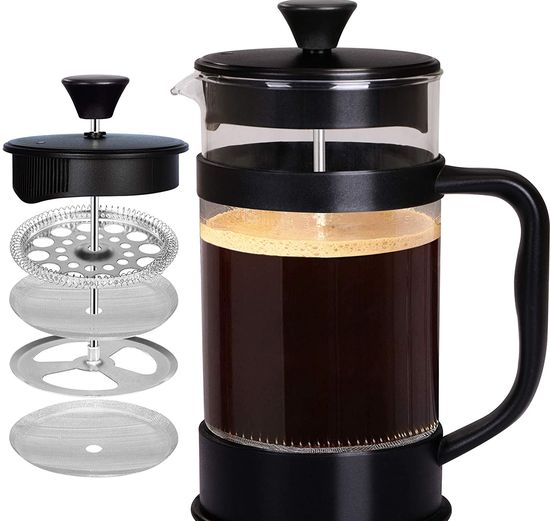
In fact, this process only requires turning the orange ring clockwise or the mug counterclockwise, or rotating them simultaneously in different directions, which is not difficult even for a child.
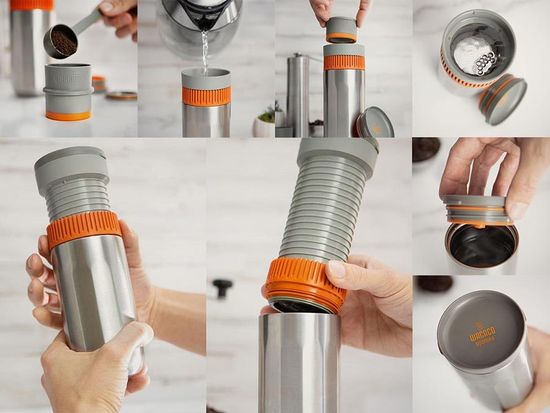
Pipamoka key features
But this is not the main goal of innovation. The reduction in brewing time is the more important advantage of the new design.
The espresso making coffee is based on the passage of pressurized hot water through the ground coffee. The task of ensuring the required pressure was successfully solved already in Minipresso. But compliance with the temperature regime of brewing remains an unresolved problem for any portable coffee maker. As known, classic espresso is brewed at a water temperature of 92-96°C. But the metal brewing unit weighs up to 200 grams and has a high thermal conductivity. Therefore, the water cools very quickly during the brewing process. Depending on the initial temperature of the water and the device, the amount and degree of ground coffee, the intensity of the pressure build-up, etc, it can drop to 60°C in a few minutes. Of course, this factor significantly reduces the extraction efficiency, being one of the main disadvantages of this technology.
According to the company, the innovative twisting mechanism reduces brewing time to two minutes. In fact, this technology solves one of the main problems of portable models, providing a higher temperature by reducing the brewing time. Unfortunately, too fast rotation decreases the extraction time and, accordingly, coffee strength. Therefore, the technology requires an individual selection of the optimal rotation speed, grinding degree and amounts of ground coffee and water for making coffee of the required strength. However, a few experiments can easily solve this problem. For example, water level to the ¾ line provides quite a rich strong coffee.
The company recommends a medium to medium coarse grind and a 1:15 brew ratio (1 g ground coffee in 15 ml water), which corresponds to the conventional drip brewing technology. Ground capacity is 3.25 tsp (16 g).
Conclusions
Pros
– low price;
– practically does not require physical effort;
– fairly high organoleptic properties of coffee;
– rugged comfortable mug;
– the permanent micro-filter mesh instead of paper filters improves usability and saves you a few dollars;
– Pipamoka comes with 10 fl oz (300mL) isothermal stainless steel mug, funnel, scoop, brush and carrying bag;
– very compact design.
Cons
– only 6-8 oz;
– the optimal brewing mode requires experimentation;
– only ground coffee (no capsules or adapter).
Unfortunately, like all portable coffee makers, Pipamoka does not solve the boiling water problem. Maybe future portable models will be able to use water heating technologies without electricity or a fire, but these are not available today. All the same, Wacaco offers NanoVessel thermos for about $ 25 and a water capacity of 210 ml or 7.10 oz.
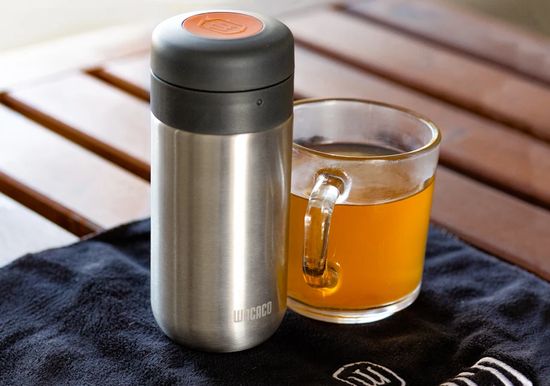
Of course, it doesn’t completely solve the problem, but it will keep the water hot enough for several hours.
The lack of an adapter for capsules is not a critical drawback, but it significantly limits the capabilities of the model. Perhaps in the future, the company will offer Pipamoka – version with this option. Overall, the Pipamoka is a great budget choice for camping / travel. But of course it will have to compete with reliable AeroPress and AeroPress Go coffee makers, very popular Staresso Portable Mini and Pro Mirage models, etc.
The video demonstrates making coffee with the Wacaco Pipamoka.
